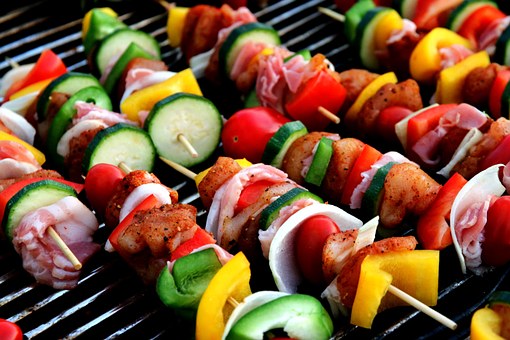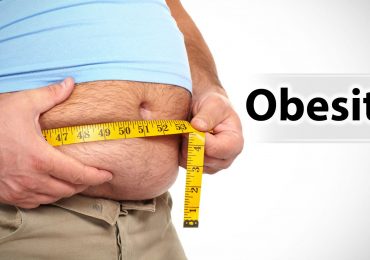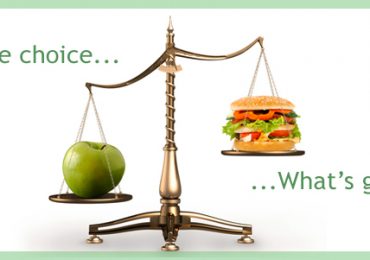
Nutrients in the food
Moderation. Small helpings. Sample a little bit of everything. These are the secrets of happiness and good health.
– Julia Child
The nutrients in the food we eat can be broadly classified into the following categories:
- Energy Containing Foods – Carbohydrates, Proteins and Fats. Since these are present in large quantities in the food, they are also referred to as Macronutrients.
- Energy releasing foods – They participate in the chemical reactions that convert food into energy. Most of the Minerals and Vitamins fall under this category. Since these are present in small quantities in the food, they are also referred to as Micronutrients.
- Protective foods: These protect our body from free radical damage. Some Minerals, Vitamins, Carotenoids, Flavonoids and other phytonutrients fall under this category.
- Water.
Carbohydrates: These are made up of (a) Glucose (b) Fructose (c) Galactose and (d) Fiber. Since these nutrients have different effects on the Insulin Resistance (IR), each nutrient will be discussed separately. Insulin resistance causes most of the metabolic syndromes.
Glucose: Grains and Vegetables are the main source of this nutrient. In the food we consume, glucose is rarely present on its own. It occurs as starch, which is a chain of hundreds of glucose molecules. The rate at which glucose is released from this chain and enters the blood is called Glycemic Index (GI) of that food. Food with higher GI causes insulin surge into the blood. The purpose of Insulin is to remove glucose from the blood as quickly as possible. Higher quantity of insulin means faster removal of glucose from the blood. As soon as glucose levels go down, body starts craving for it again, because brain cannot survive without glucose. So we are forced to eat again to replenish the blood glucose levels. With the high GI foods, this vicious cycle of high blood sugar -> insulin spike -> low blood sugar -> food intake goes on, causing weight gain and mood swings throughout the day. Some of the high GI foods are fermented carbs like Idly and bread, processed carbs like Quick Oats and cornflakes and refined carbs like white rice and Maida.
Any wonder that so many of us overweight or diabetic?
Fructose: Natural sweeteners like Sugar, Honey etc and fruits are the main sources of this nutrient. While Glucose enters the blood directly and is used as energy by all the cells, Fructose has to go to liver to get it converted into the form that can be used by the cells. Here lies the problem. If one eats fruit on empty stomach, the glucose in the fruit goes into blood and fructose goes to liver, gets converted and then enters the blood, supplying energy over a longer period. But if the same fruit or sugar laden ice cream is eaten after heavy meal, fructose is stuck up in the liver, because blood is flooded with excess calories from the meal. The fructose that is stuck up in the liver gets converted into fat causing Non-alcoholic Fatty Liver Disease (NAFLD) which is so rampant at present.
Galactose: It is a part of the milk sugar. While milk and curd are low GI foods, they are high insulin producers. So curd, which is normally eaten along with refined grains, can make you fat or increase the chance of making the individual insulin resistance and therefore, increases the occurrence of Lifestyle Diseases (LSDs). That is the reason why Ayurveda considers buttermilk healthier than curd.
Fiber: This adds to the bulk of the food without adding to the calories. Fiber is of two types: (a) Soluble fiber and (b) Insoluble fiber. Both come from plants and are forms of Carbs. Recommended daily intake is 25 to 30 gms. for every 1000 calorie diet.
Soluble Fiber: Most of the fiber supplements contain soluble fiber. It attracts water and slows digestion so you feel fuller longer. Good sources of soluble fiber are: Flax seed, Dals, Peas, Nuts, Vegetables (Carrot, Beetroot, Green Banana) and fruits (Guava, Orange, Mango etc). Soluble fiber in the diet lowers cholesterol, keeps blood sugar stable, reduces constipation and helps in losing weight.
Insoluble Fiber: The insoluble fiber does not absorb or dissolve in water. It enters the colon in its original form where it feeds the healthy bacteria. The Fatty Acids produced by the colon bacteria strengthen the liver. Good sources of insoluble fiber are: Brown rice, Whole wheat Atta, Greens, Vegetables like Beans, Cauliflower, Cabbage etc. It reduces constipation; maintains digestive health and helps in losing weight.
Proteins: Proteins are made up of Amino Acids. There are 20 amino acids that make up the human protein. Out of these, the average adult body cannot synthesize 8, so they need to be provided in the diet. These are called essential amino acids. Quality of protein is judged based on their presence in an adequate quantity. The predominantly grainarian diet of Indians can provide adequate protein including all the essential amino acids, if the calorie consumption is 2400 or more per day. Since the present lifestyle of most people does not permit them to consume more than 2000 calories per day, the diet needs to be fortified with proteins.. The following points should be kept in mind while consuming the protein.
- Protein is required to maintain muscles, transport oxygen, support metabolism, fight infections and to maintain blood sugar levels in between the meals.
- The requirement varies from 0.8 to 1.0 gram per kg of body weight, depending on whether the protein is of animal origin, or of vegetarian origin or of a mixed origin.
- Daily quota of protein has to be equally divided among all the meals. This is essential because protein is required to maintain blood sugar levels between the meals and also there is no storage capacity in the body for protein.
- If enough protein is not provided in the meal, body uses the muscle to meet its protein requirements. Since the calorie burning capacity of the body is determined by the quantity of muscle mass, loss of muscle leads to weight gain and lowers metabolic rate in the long run.
Fats: Fats are made up of Fatty Acids. These can be divided into 3 types, which are as follows:
- Saturated Fatty Acids (SFAs): In Indian diet, these come mainly from Ghee and Coconut oil. They are implicated in heart ailments. SFAs in the body and not in the diet are responsible heart problems. The source for SFAs in the body is excess calories and not SFAs in the diet. World health Organisation (WHO) recommends that up to 10 % of fat consumed should be in the form of SFAs. As opposed to this WHO recommends that PUFAs should be restricted to less than 7 % of the calories.
- Monounsaturated Fatty Acids (MUFAs): They are central part of heart healthy Mediterranean diet. Olive oil is the most well known source of MUFAs. Among the cooking oils used in India, Groundnut oil has maximum MUFAs followed by Gingelly oil. But one should not consume more than 25 gms of cooking oil per day, even if it is olive oil.
Our Service Offerings:
- We help you identify food groups that are deficient and excessive in your daily intake and make modifications accordingly
- We make a practical nutrition plan that is tailor made for your lifestyle






